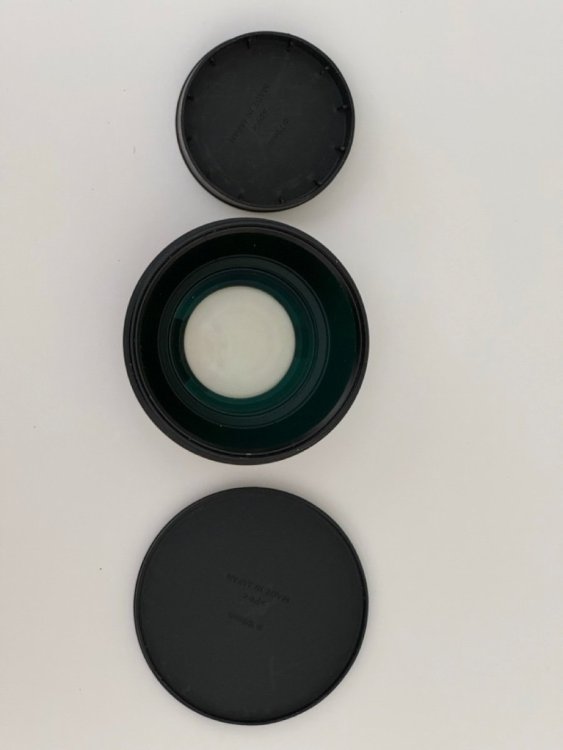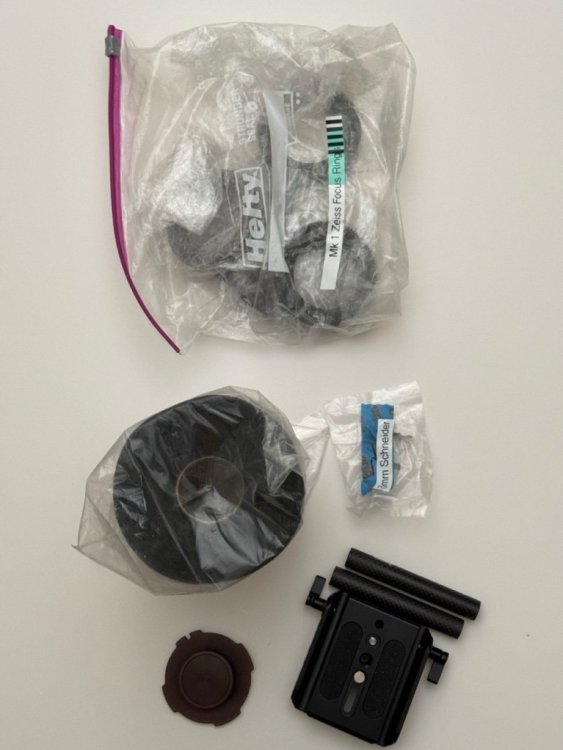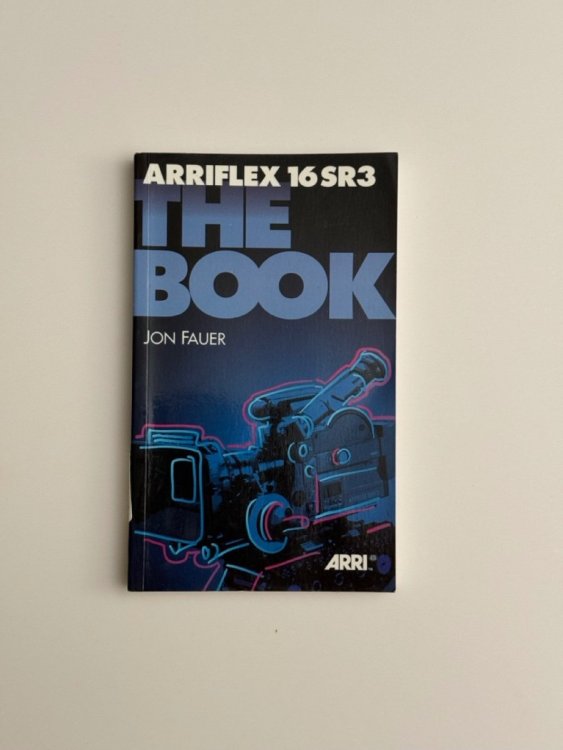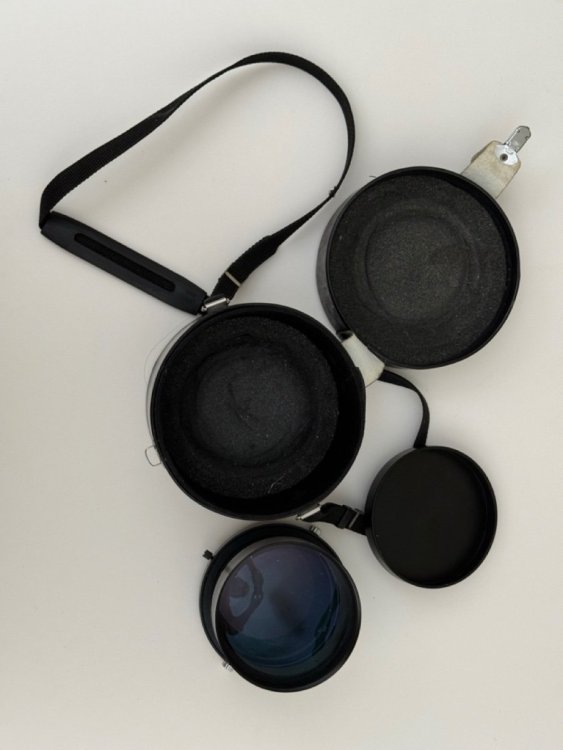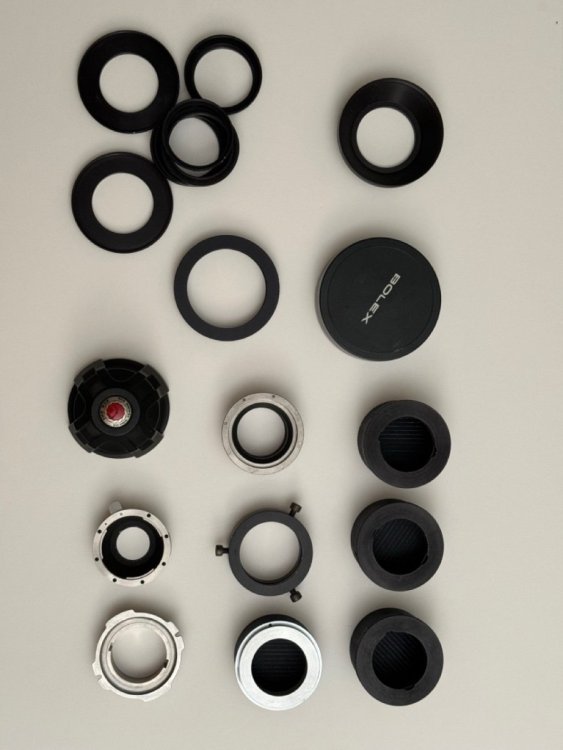
M Joel W
Basic Member-
Posts
768 -
Joined
-
Last visited
Everything posted by M Joel W
-
There's no right and no wrong. But I think he's talking about focal length, not shot scale. The way I see things, the audience feels closer to and empathizes more with a character that is physically closer to the camera (and therefor the audience). Spielberg and Deakins tend to shoot dialogue (shot/reverse) on relatively wide lenses around 28mm to 40mm I think (correct me if I'm wrong) for the protagonist and maybe the secondary character on a longer lens. So with the wider lens at the same approximate shot scale, the camera must be physically closer to and more intimate with the protagonist. If the distance between both characters and the camera were the same and just the focal length varied, it might feel strange, I agree; the framing would simply be wider with the main character and the physical distance between the camera and characters about the same. Most people I think would tend to match focal lengths and distance from camera. There's no right and wrong. But in this case I agree with his point. And I think he's talking about using the same shot scale for both characters in shot/reverse but varying the focal length to create familiarity and empathy with the protagonist by shooting them a bit wider.
-
Canon FL lens set in excellent condition (non-rehoused)
M Joel W replied to M Joel W's topic in Cine Marketplace
Still for sale. Would like to sell soon. -
Throwing in a 72mm Canon Wide angle adapter 0.8X with the deep rear threads machined off so that it works on this camera. Not sure if you want lens support for this or not.... YMMV so be careful. But it's a great adapter. I believe it is what Chris Probst similarly modifies and uses on his Kowa anamorphic lenses. Will also sell separately for $80 OBO.
-
Great deal for the right person. Not splitting up... unless you make a good offer. Very high quality steel PL mount adapter Arri Bayonet mount (to replace PL mount) Nikon to Aaton mount adapter. (For some reason it doesn't fit my LTR-X but neither do other genuine similar looking adapters so it should probably work on your Aaton mount camera.) 3X RAFcamera Arri standard or bayonet to EF mount adapter (watch the rear protrusion of the lenses with a (d)SLR! only use it on mirrorless or with mirror up!) with 3D printed lens caps 1X Adriano Lolli Arri standard or bayonet to EF mount adapter (flange distance adjustable) with custom 3D printed lens cap, same story 1 49-77mm 80mm O.D. Duclos step up ring for Mk1 standard speed lenses (except the 85mm I believe has 47mm threads?) RAFcamera OCT-18 to PL mount. Doesn't work with lenses without focusing helical, so probably only good for the zooms or just to try lenses out? Ears from a 75mm Cine-Xenon RAF step up rings: M47x0.5M -> M72x0.75F M49.0x0.5M -> M72x0.75F M47x0.5M -> M49x0.75F M47x0.75M -> M52x0.75F 3X M49.5x0.5M -> M55x0.75F 2X M49.5x0.75M -> M55x0.75F Roll of Black Tulle 10X Simecine 51mm Rubber Focus Rings (for 51mm to 53mm diameter lenses) plus 4X extra with some rubber cut off to fit the prong on a Nikkor lens 55-56mm Birns and Sawyer (?) metal focus ring 4X Simecine 56mm Rubber Focus Ring (for 56-59mm diameter lenses) Metal PL mount body cap Little small rig base plate and 100mm carbon fiber rods 5X Zeiss Mk1 standard speed focus rings (metal) from RAFcamera Bolex 4mm Aspheron Red One Digital Cinema PL rear cap Some metal 80mm front, 58mm inner diameter (not sure what it fits or how) Canon broadcast angle converters: 0.8X and 1.5X I used an adapter to put the 1.5X on an 85mm f1.2 lens to try to make a 128mm f1.3 lens? It worked but I didn't want to break the lens.... All of this for $200 shipped ground within continental US. Can ship elsewhere for more. Also available: The Arri SR3 Book. Free, but you pay shipping.
-
Thanks. So it's interesting, I tried two more adapters out (sold by someone on this board who was very helpful) and apparently they're genuine Aaton adapters. But one is newer, one is older. The older one looked like the one I have that didn't fit. It also didn't fit. But apparently it fits most other Aaton mount cameras. Mine is an older camera (LTR-X). The newer one looked different and it fits my camera well well. It's not too loose, either. If you're interested in trying my old one out to see if it's better I'm selling it really cheap. Edit: probably not worth the effort if you're in Europe; I'm in the US.
-
Price reduction: $950 for everything. Moving across the country soon and need to sell.
-
Thank you! It might be the chamfer. It's so close to fitting. I'll probably take it to machinist when I get back to LA.
-
It's odd – I measured it with a caliper and everything seems to be about the same as my other Aaton mount lenses, at least close enough. I wonder if just shaving down a little bit here or there might help. But it's hard to say.
-
I don't believe so. No glass element inside and it's a very close fit, just feels a little too tight and kind of gets stuck in the mouth and the positive lock won't lock. It fits into an Aaton cap.
-
I bought an adapter from someone on this forum (traded for it) and forgot to see if it fit on my camera. Which I should have. It doesn't quite seem to fit. The three prongs don't go low enough to lock the mount. My other lenses and Aaton adapters are all okay. Should I bring it to a machinist to machine down the sides of the prongs? Which I assume are the issue? Or just sell it here really cheap/give it away? Is this a common issue? Any way to fix it? Thanks!
-
That makes sense, thanks! I'm still not clear on if there is vertical breathing in the out of focus areas or just exaggerated vertical anamorphic stretch, but it would explain a lot as the C Series do not behave like the Kowas I've seen or Lomo (square front) I own. Years ago I almost bid on that set of Auto-Panatars on eBay btw....
-
I can't believe I'm arguing with someone at Panavision about this, but if you refer to David's answer here it correlates with my personal experience: https://www.cinematography.net/edited-pages/AnamorphicEntry.htm "Panavision solved this by making the compression error occur in what's OUT of focus as you focus closer and closer, so the out of focus background gets compressed MORE than 2X, making it look skinny even after it's expanded by twice during projection. But I digress..." I probably have the terminology wrong, but the image does breathe differently in X and Y axes in my experience. Also, not sure what accounts for this:
-
I did vfx on a show that was shot with C Series and remember there that the breathing wasn't consistent between horizontal and vertical axes. We weren't provided with STMaps so I don't know for sure, but the image stretched more in one axis than in the other. (Which I took to be mumps.) You would know better than I would, and it's probably that I was tracking the aspect ratio of the bokeh appearing to stretch the image vertically. But that alone didn't account for it, I had to use anamorphic bokeh and scale the image differently horizontally and vertically as well. It behaved a lot like mumps, but it sounds like it was vertical smearing. Regardless, you can see the effect on the grid in the background here (during the C series test).
-
I might have a mount like this somewhere (and I'm trying to get rid of it) but won't be able to look for it for a month. PM me if you're still looking then, though. Not sure what pattern of holes it has but I was looking to replace the mount on a 50mm PL lens with Bayonet to covert it to Aaton before giving up on all that.
-
I feel like the average projection of a print when most theaters showed prints was around HD resolution, but a good print could exceed that (by a bit). 1080p video generally feels sharper (not in a good way, necessarily) than film prints, imo, perhaps because of digital sharpening. I think large parts of Transformers etc. had vfx done at sub-2K resolution. The idea that HD is sharp enough to be comparable to S35 projection is not a lie, it's just not that simple. The most confusing issue, I think, is that the MTF curve of digital and film behaves differently. And sharpness is more determined by the area under the MTF curve than where it becomes extinct at 0% or <20%. We're looking at entire systems and the combined MTF curves of the entire system (including, potentially, digital sharpening), so there are a million answers and none are right. In my experience scans are usually sharper than prints for stills (digital prints sharper than cibachrome), I assume film prints are similarly softer than the best scans of negatives. In my experience, a very good S35 4K scan if you zoom way in has more resolution than 2.8K ArriRAW or 3.2K Arri ProRes, but not by much. Yet a good 2K DCP projection is probably significantly sharper than your average theatrical print from the 90s (hard to say for sure) because of all the other variables involved. An 8K S35 scan should yield significantly more texture in the grain than 4K, but imo no more meaningful resolution in the image.
-
Looks like the sale fell through (my bad for not following up faster), so this is for sale again. The viewfinder is quite hazy and I think needs a CLA overall. But cosmetically this camera is showroom clean, it looks brand new. Would rather sell it to someone here than put it on eBay.
-
Any Nikon Mount lenses with proper focus direction?
M Joel W replied to M Joel W's topic in Lenses & Lens Accessories
I have an MFF1 from Arri. I think it has a reversible direction? I like to pull off the barrel sometimes so it's not 100% a fix, but if I can adapt to it by switching the direction on the follow focus when I use it and just learning to pull in both directions, that's fine. -
Any Nikon Mount lenses with proper focus direction?
M Joel W replied to M Joel W's topic in Lenses & Lens Accessories
Thanks, Eric. I see that those can be converted to PL mount as well. Not sure if there is a 50mm f1.4, however. I'm looking into Leitax conversions of C/Y lenses. Expensive, but maybe the best option for me for now given I want to match Zeiss and it provides some flexibility. -
How is this camera different from the LTR-X? I have an S16 LTR-X with the magnetic motor but the XC seems to have a newer body and better eyepiece? Is it possible to adapt V Mount (or in my case gold mount) batteries to the LTR-X? Did anyone hunt down that guy who made a Contax to Aaton mount adapter successfully? Would be cool to get Contax primes to complement the MK1 super speed set (which tops out at 25mm, unlike the Mk2 and could benefit from a 35mm and 50mm f1.4)?


